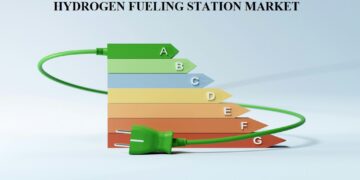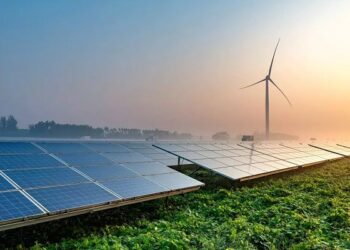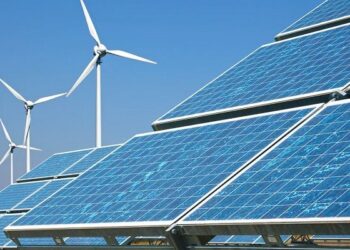- The worldwide solar panel manufacturing capacity happens to be projected to touch 1,200 GW per year by 2030, with the present deployment plans looking to utilize less than half of this capacity.
- China goes on to dominate the solar manufacturing sector; however, there is indeed a push for greater diversification in terms of manufacturing so as to strengthen global supply chains as well as reduce dependency.
- Recent innovations as well as policies such as the Inflation Reduction Act in the U.S. happen to be making solar power growingly cost-effective, thereby contributing to its fast expansion as a major energy source.
It is worth noting that solar energy operations have been flourishing in recent years, with decades of sustained investment as well as recent innovations within solar panel technology. The fact is that there has already been a solar manufacturing boom, which is, in all likelihood, going to continue at a very rapid pace. Nations across the world happen to be investing heavily when it comes to raising their solar energy levels in support of the green transition, with China and the U.S. apparently leading.
The IEA’s World Energy Outlook for 2023 goes on to discover the potential in terms of growth in the solar energy industry, based on its already robust performance in recent times. Renewable energy sources are anticipated to go ahead and contribute almost 80% of new power generation capacity by 2030, which is, by the way, based on the present project pipeline, with solar power making up more than half of the expansion. But the WEO underscores the fact that solar energy has significantly more potential.
By this decade end, there is going to be a worldwide manufacturing capacity of almost 1,200 GW of solar panels every year, but it is anticipated to roll out only 500 GW of this capacity. However, if in case, it is deployed, 800 GW of the new solar PV capacity by 2030 could go on to decrease coal-fired power generation within China by 20% more and another 25% in Latin America, Africa, Southeast Asia, as well as the Middle East. All this happens to be based on the IEA’s anticipated scenario.
Investments within the solar power have gone on to see an increase quite substantially over the last 10 years, thereby allowing a solar manufacturing boom. The yearly rollout when it comes to electricity generation from solar PV sources has surged over sevenfold. The pipeline when it comes to global solar module manufacturing is all set to see a rise from almost 640 GW in 2022 to more than 1,200 GW within the medium term, with quite a prominent expansion along with the entirety of the supply chain, including the polysilicon production of wafers as well as solar cells. This is, in all likelihood, expected to support many countries worldwide in their endeavor to undergo a green shift.
But at present, there are some five countries that dominate the solar manufacturing sector, namely China, India, Vietnam, Malaysia, as well as Thailand. China happens to be having the capacity to come up with solar modules with an output of more than 500 GW per year, thereby contributing almost 80% of the worldwide manufacturing capacity, which itself goes on to mean that there are many countries relying heavily on solar panel imports so as to develop solar energy projects. Raising the manufacturing capacity when it comes to small solar manufacturing markets like the US, Korea, Cambodia, Turkey, as well as the EU can very well reduce the reliance on a select few markets and at the same time make the supply chains more robust.
Dan Shugar, CEO, Nextracker in February this year, said that there is phenomenal progress which is being seen across the solar market. He added that solar power happens to be on the path to double every 2-3 years amid the unmatched period of growth in demand as far as new electricity generation is concerned. He further said that solar is indeed unstoppable and that the intrinsic economics in terms of utility-scale are indeed massive, both in the U.S. as well as overseas. The fact is that it has never been this favorable.
Although, there has been a dip in the deployment of residential solar systems, there has also been a pretty robust demand among the large utility-scale customers, with an order backlog with Nextracker of more than $3 billion. In the U.S., this demand has got pushed due to the rollout of data centers, the electrification of appliances along with transportation, and reindustrialization. Shugar stressed that around 300 GW of new power plants will be required in the next five years and 500 GW in the next decade, in order to meet the rising demand.
Notably, the solar energy market is all set to experience a CAGR of 26% in the next five years and go on to become the principal source as far as electricity generation in the U.S. is concerned in the next decade. Moreover, the recent innovations as well as the widescale rollout when it comes to solar operations happen to be driving down prices pertaining to production having utility-scale solar costs between $24 to $96 every megawatt hour, and that too sans the subsidies. This is almost 56% cheaper vis-à-vis nuclear and gas power production, as well as 42% less costly as compared to coal. With subsidies offered by the Biden administration’s IRA, all of this goes on to make solar power massively cheaper than many energy sources.
In the meantime, China happens to be very much leading the world in terms of solar power, setting benchmarks for others to follow. Wind as well as solar power are anticipated to overtake coal plants in 2024, with the country already adding 217 GW in PVs in 2023, which apparently is more than rest of the world put together. The China Electricity Council anticipates solar and wind energy to give out 40% of grid power production by 2024 end as compared to 37% when it comes to coal. China is all set to surpass its 1.2 TW target for wind and solar by the end of the decade by way of producing estimated 1.3 TW of combined power in 2022. It now happens to have almost 609 GW of solar energy capacity, which is far greater than the U.S., which is the world’s second-biggest solar market.
Notably, it is China and the U.S. that happen to be leading the way in solar energy, with many other nations across the world following. But more diversification of the solar component manufacturing market can go ahead and improve supply chains as well as decrease reliance on a few high-production nations. All areas when it comes to the solar supply chain have to be strengthened so as to ensure that the rising manufacturing capacity goes on to match production throughout the chain and also demand, in order to support maximum roll-out rates.




































